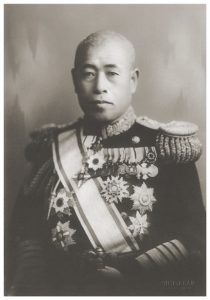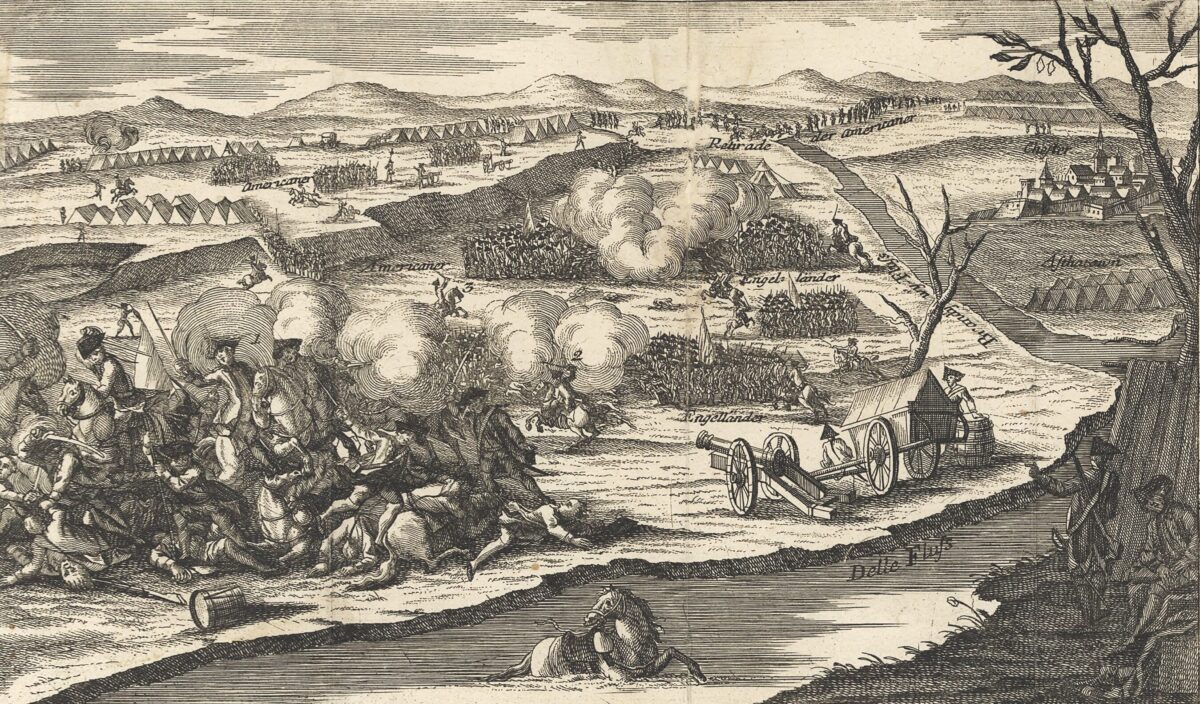The faith-based wars that wracked Europe after the Reformation saw armies casually slaughter noncombatants and fanatics assassinate kings and commanders of the wrong religion. By the mid-17th century, however, a wearier—and perhaps wiser—continent began to professionalize its warrior class and regulate conflict. These reforms carried over to fighting in the New World, at least when the combatants were white. Captors treated officers held prisoner with courtesy; grunts, not so much. Even in battle, armies thought it rude to target enemy officers. On the eve of an action at Brandywine Creek, Pennsylvania, in September 1777, Major Patrick Ferguson of the British army observed two American officers, one in a large cocked hat, reconnoitering ahead of their front line. Ferguson, a crack shot, called on the Continentals to dismount. Instead, the pair of Americans turned and rode off. “I could have lodged half a dozen balls in or about” the man in the cocked hat, Ferguson wrote. “But it was not pleasant to fire at the back of an unoffending individual who was acquitting himself coolly of his duty, and so I left him alone.” After the Battle of Brandywine, Ferguson learned from captured Americans that his nonchalant almost-target had been General George Washington.
Standards had frayed noticeably by the time of the Civil War, when both Confederates and Union men hatched plans to kidnap and possibly kill one another’s presidents.
A 4,500-rider Union cavalry raid on Richmond in late February 1864 advertised as being to free prisoners of war was intended, according to captured orders, to kill Jefferson Davis and his cabinet. The attack sputtered to nothing, and the Union claimed the orders, which the Confederates ballyhooed far and wide, were forgeries. A year on, John Wilkes Booth, heartthrob thespian and Confederate partisan, plotted to kidnap Abraham Lincoln in order to ransom Confederate POWs. Lee’s surrender at Appomattox made Booth’s scheme moot, since there no longer was an Army of Northern Virginia for freed rebels to rejoin. In celebratory remarks two days later, Lincoln called for enfranchising black veterans, inspiring Booth to reframe. “That means n—— citizenship,” the actor said. “That is the last speech he will ever make.”
By the mid-20th century, the gloves had come all the way off. In April 1943 the U.S. Navy and the Army Air Force took out the Japanese Navy’s senior admiral. Isoroku Yamamoto, scion of a samurai family, was 20 when he joined the service in 1904 and lost two fingers fighting the Russians. Yamamoto spent several of his rank-climbing years enrolled at Harvard and serving as a naval attaché in the American capital. A keen-eyed guest, he appreciated America’s industrial might and war-making potential. “Anyone who has seen the auto factories in Detroit and the oil fields in Texas knows that Japan lacks the national power for a naval race with America,” he wrote. Another time he drolly observed, “Should hostilities once break out, it would not be enough that we take Guam and the Philippines, nor even Hawaii and San Francisco. To make victory certain, we would have to march into Washington and dictate the terms of peace in the White House. I wonder if our politicians have confidence as to the final outcome.” However, Yamamoto was also a gambler, drawn to games of chance and skill Asian (shogi, Go, mah-jongg) and western (poker, bridge). When Japan decided in 1941 to take on the United States, he went all in.
Hoping to avert a long, attritive slog, Yamamoto masterminded the attack on Pearl Harbor—a surprise that, while stunning, failed to sink any American aircraft carriers. Six months later the master tactician doubled down at Midway. That resounding failure sent Yamamoto’s own carrier group to the bottom. His fears came true.

After the hellish losing struggle for Guadalcanal, Yamamoto wanted to coordinate air raids against Allied forces on New Guinea and also encourage his men. In April 1943 he made plans to fly from his headquarters at Truk in the central Pacific. His trip would take him to forward positions 1,000 miles south at Rabaul on New Britain and on Ballalae, a speck of an island off Bougainville. The admiral’s staff prepared detailed itineraries—their boss believed in planning and punctuality—and radioed them in code to the relevant outposts.
Unfortunately, the Americans had excellent code breakers—over 2,000 laboring at Pearl Harbor, with more in Washington. Even before Midway, decoders had unscrambled Japanese battle orders; now the Americans knew where the planner of Pearl Harbor would be traveling and when. Did the news go all the way to FDR? There is no paper trail to the Oval Office, but Roosevelt had had a lifelong interest in naval affairs. Admiral Chester Nimitz, commander of the Pacific Fleet in Hawaii, issued a formal order to kill Yamamoto. Passed westward and down the chain of command, the order acquired a belligerent postscript: “TALLEYHO LET’S GET THE BASTARD.”
The Americans hesitated only out of political and practical concerns. Some naval intelligence officers thought Yamamoto, given his history of reluctance to go to war, might become a force for peace. This sounds in hindsight like daydreaming—neither side in the Pacific was looking for a settlement. Killing Yamamoto might alert the Japanese to replace their code, sending American cryptologists back to square one. But the presumed damage to enemy morale from his death, and the prospect of vengeance, were too tempting. Military ethics never came up.
The hit was timed for Palm Sunday. The plan was to intercept Yamamoto’s aircraft as it neared his second stop, Ballalae. A squadron of 18 Army Air Force P-38 Lightnings—sturdy, deadly long-range fighters—would sally from Guadalcanal. The pilots could not go directly; the crow’s-flight course would take them over enemy-held islands. Instead, flying by compass, the Lightning pilots would detour across 500 miles of ocean. Technical problems sidelined two fighters at or shortly after take-off. The other 16 arrived punctually, as did their target. Cannon fire sent the bomber carrying Yamamoto crashing in jungle on Bougainville. Japan took a month to reveal his death. Queried about that news at a press conference, FDR feigned surprise: “Is he dead? Gosh!”
On Friday, January 3, 2020, Major General Qasem Soleimani, commander of Iran’s military operations in Syria and Iraq, died by American drone near Baghdad Airport. The U.S. State Department had designated Soleimani a terrorist as long ago as 2007. President Donald J. Trump reportedly decided last June that if Soleimani were to be found responsible for yet another American death, he had to die. In late December 2019 a pro-Iranian militia’s rocket attack on an airbase in northern Iraq cost an Iraqi-American contractor his life. You kill our contractor, we whack your two-star.
Critics complained that the Soleimani strike unnecessarily inflamed Iranian opinion against the United States. A few constitutionally oriented eccentrics raised federalism concerns. In 2002, Congress had authorized use of military force in Iraq, a law aimed at Saddam Hussein and, arguably, his terrorist legatees. Invoking that measure to ambush visiting Iranians might be a stretch. But the consensus, outside antiwar fever swamps, was that Soleimani had gotten what was coming. “No American,” former Veep Joe Biden declared, would mourn his passing. “He deserved to be brought to justice for his crimes against American troops and thousands of innocents throughout the region.”
Welcome to the not-so-new world.





